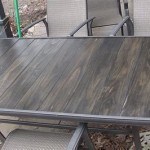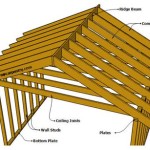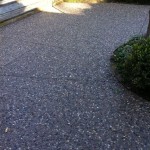Flat Stones for Patio Design: A Comprehensive Guide
Flat stones offer a timeless and versatile option for patio construction. Their natural beauty, durability, and relative ease of installation make them a popular choice for homeowners seeking to enhance their outdoor living spaces. Various types of flat stones exist, each with unique characteristics, advantages, and disadvantages. Understanding these differences is crucial for selecting the best material for a specific patio project.
The term "flat stone" generally refers to natural stone that has been quarried and processed into relatively flat, usable pieces. This category encompasses a wide range of stone types, including flagstone, slate, sandstone, limestone, and even some forms of granite and bluestone. The defining characteristic is their ability to create a reasonably level surface suitable for walking, seating, and general outdoor use.
The size and shape of flat stones can vary considerably. Some are cut into rectangular or square shapes for a more formal, structured appearance, while others are left in their natural, irregular forms for a rustic, organic aesthetic. The thickness also varies, influencing the ease of handling, the required base preparation, and the overall durability of the patio.
Choosing the right flat stones for a patio involves careful consideration of several factors, including budget, desired aesthetic, climate, and intended use. A thorough understanding of the properties of different stone types is essential for making an informed decision.
Key Considerations When Selecting Flat Stones
Selecting appropriate flat stones is crucial for the success of any patio project. Several factors influence this decision, ensuring both the aesthetic appeal and the long-term durability of the outdoor space.
Material Type and Properties: The type of stone is a primary consideration. Each stone possesses distinct characteristics that impact its suitability for patio construction. Flagstone, for example, is known for its durability and natural variations in color and texture. It is typically sedimentary rock that splits easily into flat layers. Slate is another popular choice, offering a smooth, fine-grained surface that is resistant to water absorption. Sandstone provides a warmer, more porous option, often exhibiting rich earth tones. Limestone, known for its lighter color palette, can be more susceptible to scratching and staining than other options. Granite, while typically used for countertops, can be available in flatter forms and offers exceptional durability but can be more expensive.
The density and porosity of the stone directly affect its performance in outdoor environments. Denser, less porous stones, such as slate and some granites, are more resistant to weathering, freeze-thaw cycles, and staining. More porous stones will require sealing to protect them from moisture absorption, which can lead to cracking and crumbling over time.
Size, Shape, and Thickness: The size and shape of the flat stones influence the laying pattern and the overall aesthetic of the patio. Larger stones create a more expansive, less busy appearance, while smaller stones allow for more intricate designs. Irregularly shaped stones offer a natural, organic look, while precisely cut stones provide a more formal, structured feel.
The thickness of the stones is crucial for their structural integrity. Thicker stones can withstand heavier loads and are less prone to cracking or shifting. For patios intended for heavy foot traffic or furniture, thicker stones are generally recommended. Thinner stones are suitable for lighter-use areas but may require a more robust base to prevent breakage. A general guideline is to use stones at least 1.5 inches thick for pedestrian traffic and greater than 2 inches for areas that will see vehicles.
Color and Texture: The color and texture of the flat stones contribute significantly to the overall aesthetic of the patio. Color variations within the stones can add visual interest and character. Consider the surrounding landscape and architectural style when selecting colors. Earth tones, such as browns, tans, and grays, often blend seamlessly with natural environments. Lighter colors can create a brighter, more inviting space. The texture of the stone also plays a role. Rough, textured surfaces provide better traction, especially in wet conditions, while smoother surfaces can be more comfortable to walk on barefoot.
It’s also important to consider whether the color will fade over time from sun exposure. Some stones hold their color better than others.
Preparing the Base for Flat Stone Installation
Proper base preparation is paramount for ensuring the stability and longevity of a flat stone patio. A well-constructed base prevents settling, shifting, and cracking of the stones, ensuring a level and durable surface for years to come.
Excavation and Grading: The first step is to excavate the area to the desired depth. This depth will depend on the thickness of the flat stones, the base materials, and the desired finished height of the patio. Typically, a depth of 6-8 inches is sufficient for a standard patio. Once the area is excavated, it needs to be properly graded to ensure proper drainage. A slight slope, typically 1/4 inch per foot, should be established away from the house or any other structures to prevent water from pooling on the patio surface.
Compacting the Subgrade: After grading, the subgrade, which is the existing soil beneath the excavated area, needs to be thoroughly compacted. This can be achieved using a plate compactor, which compacts the soil to create a solid and stable foundation. Compacting the subgrade prevents settling and ensures that the base materials are evenly supported. This step is critical for preventing heaving during freeze and thaw cycles.
Adding and Compacting the Base Material: A layer of base material, typically crushed gravel or compacted aggregate, is then added to the excavated area. The thickness of this layer typically ranges from 4-6 inches. The base material provides drainage and helps to distribute the weight of the patio evenly. The base material needs to be compacted in layers, typically no more than 2-3 inches thick, to ensure proper compaction. A plate compactor should be used to compact each layer thoroughly. This creates a stable and level surface for the flat stones to rest on.
Laying Sand Bedding: A leveling bed of sand, typically 1-2 inches thick, is applied over the compacted base material. This sand layer provides a smooth and even surface for laying the flat stones. The sand should be leveled using a screed board to ensure a consistent thickness. The sand bed helps to compensate for slight variations in the thickness of the stones and allows for minor adjustments during installation. Avoid using polymeric sand at this stage.
It’s crucial to use the correct type of sand. Coarse sand is preferable as it allows for better drainage. Finer sands may retain water and could lead to shifting of the stones.
Installation Techniques for Flat Stone Patios
The installation process for flat stone patios varies depending on the type of stone, the desired pattern, and the chosen setting method. Common techniques include dry-laying with sand or gravel joints and mortar-setting over a concrete slab.
Dry-Laying with Sand or Gravel Joints: Dry-laying involves setting the flat stones directly onto the sand bedding, without using mortar. The joints between the stones are then filled with sand or gravel. This method is relatively straightforward and allows for natural movement of the stones, which can be beneficial in climates with significant freeze-thaw cycles. This method is generally easier for DIY projects.
When dry-laying, it is crucial to carefully select and arrange the stones to create a stable and aesthetically pleasing pattern. Start by placing the largest stones first, then fill in the gaps with smaller stones. Use a rubber mallet to gently tap the stones into place and ensure that they are level with each other. Maintain consistent joint widths, typically ranging from 1/2 inch to 2 inches, depending on the desired look. Once all the stones are in place, sweep sand or gravel into the joints, compacting it with a broom or brush. Water the joints lightly to help settle the sand or gravel.
Mortar-Setting Over a Concrete Slab: Mortar-setting involves adhering the flat stones to a concrete slab using mortar. This method provides a more permanent and stable patio surface, but it requires more skill and labor. A concrete slab provides a solid, level base for the stones, preventing them from shifting or settling over time.
To install flat stones with mortar, first prepare a concrete slab that is at least 4 inches thick. The slab should be reinforced with wire mesh or rebar to prevent cracking. Allow the concrete to cure completely before starting the stone installation. Once the concrete is cured, apply a layer of mortar to the back of each stone and carefully set it in place on the slab. Use a rubber mallet to gently tap the stone into place and ensure that it is level with the surrounding stones. Maintain consistent joint widths. Once all the stones are in place, allow the mortar to cure for at least 24 hours before walking on the patio. Grout the joints between the stones with mortar, ensuring that the joints are completely filled. Clean any excess mortar from the surface of the stones promptly.
Creating Patterns and Designs: The arrangement of flat stones can significantly impact the visual appeal of the patio. Common patterns include running bond, herringbone, and basketweave. Irregularly shaped stones can be arranged in a random, organic pattern. When creating a pattern, it is important to consider the size and shape of the stones, the joint widths, and the overall aesthetic you are trying to achieve. Before laying the stones, it can be helpful to lay them out on the ground to experiment with different patterns and arrangements. Use different colored stones to create borders or accents. Mix different sizes of stones to add visual interest.
No matter the installation technique, it is advisable to wear safety glasses and gloves when working with flat stones and mortar. A dust mask is also recommended when cutting stones to prevent inhalation of dust particles.

35 Stone Patio Ideas S Stones Designs Pavers Design

Flagstone Patio Stone Stones Pavers Design Designs

Outdoor Small Backyard Landscaping Ideas With Installing Flagstone Patio Stone Garden Decor Designs Design

Flagstone Paving Ideas Landscaping Network

Flat Stone Patio With In Ground Fir Pit Fire Stones
Types Of Stone Patios Concord Stoneworks

Nh Bluestone Flagstone For Plus Delivery

27 Stone Patios Ideas Patio Stones Backyard Design

Flagstone Paving Ideas Landscaping Network

Create A Patio For Comfort Interest And Beauty
Related Posts








